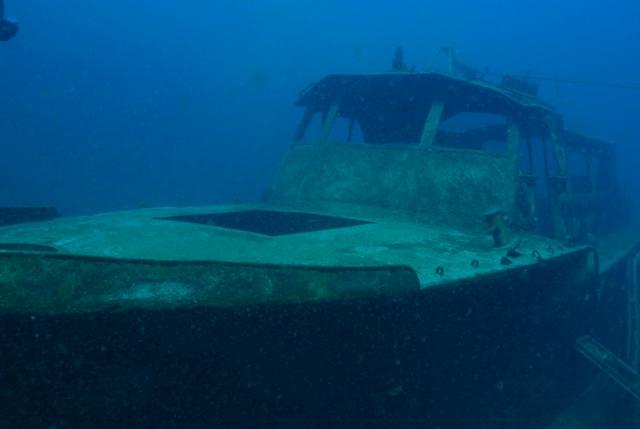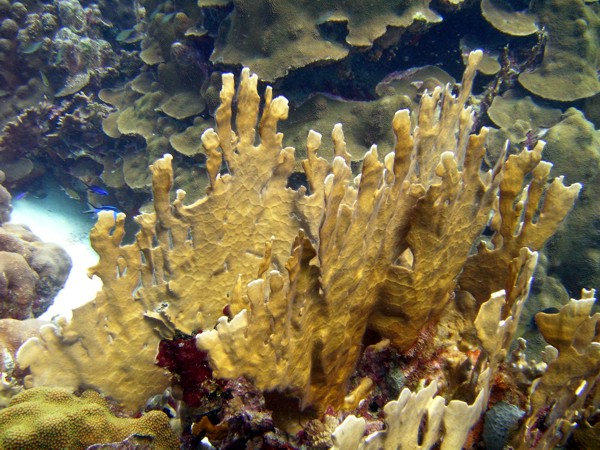We headed out on Sunday with a mixed forecast from NOAA. A front was scheduled to move through, it was just a question of when. As we left, we had clear skies and calm seas. The weather during the week had been rough with lots of wind and rain. This left us with a dilemma, stay inshore and risk bad vis, or go offshore and risk getting the dives cut short by the rough seas when the front came through. The final decision was to check out a new set of numbers inshore.
The ride was quick since the ocean was mostly flat. There were some rollers, but nothing like last week. We were only in about 90 ft of water, but when dropping down the line, the lights went out quickly! On the bottom the vis varied from 5-10 ft at best. I turned on my light, but the reaction was like high beams in the fog.
It was difficult to tell much about the wreck, but it was obviously wooden and still had at least 10 ft of relief. In the short vis, it was difficult to see all the monofilament on the wreck. However, you could feel it tugging on your gear. (One diver came back up with line and a lead sinker wrapped around his fin.) Seabass were about the wreck, but were not active. Most were hiding under pula pula inflavel the wooden planks. There were a couple of eelpouts here and there, and even a sea raven. One large winter founder passed by but alas I had not brought the right weapons. I spent most of the time looking under the boards for lobster, but only saw one of consequence. He was way back in a hole with no intentions of coming to visit.
After a while, I started to feel a distinct trickle of water running down my right arm. I tugged on the dry suit zipper, but it was closed. I guess I did not find all those holes after all. The bottom temp had been 44 degrees. Back on the line, the temp started to rise to 50 at 20 ft. From there to the surface, the vis dropped down to a few inches. I could barely see my hand on the line. I could not see the boat until I broke the surface. (No wonder it was dark.)
We pulled the hook and moved over to the Pinta for the second dive. Here, on with a sandy bottom, the vis was closer to 15-20ft, but still very dark. Here there were more fish about with Tog, Seabass and Cunners darting in and out of the wreck. As with last week, the anemones were out, swaying in the moderate surge. I still spent my time hunting the elusive crustacean. I found a few shorts, but nothing to bring home. Before too long, I started to feel that trickle again, and headed back to the line. This week, I’ll be on the deck with the Aquaseal.

 My wife and I enjoy identifying the different fish, coals and critters (aka invertebrates) found on the reefs we visit. I take pictures and video while diving, then in the evening we review them and try to identify any that we do not recognize. In several video sequences, I captured the action of small fish darting in an out of leafy coral heads. At the time I believed blades to be some form of encrusting coral. Little did I know.
My wife and I enjoy identifying the different fish, coals and critters (aka invertebrates) found on the reefs we visit. I take pictures and video while diving, then in the evening we review them and try to identify any that we do not recognize. In several video sequences, I captured the action of small fish darting in an out of leafy coral heads. At the time I believed blades to be some form of encrusting coral. Little did I know.